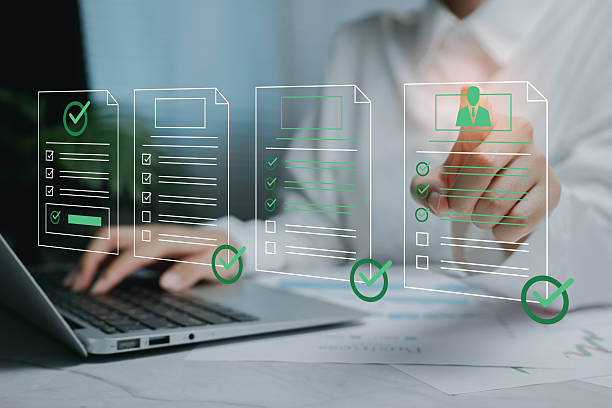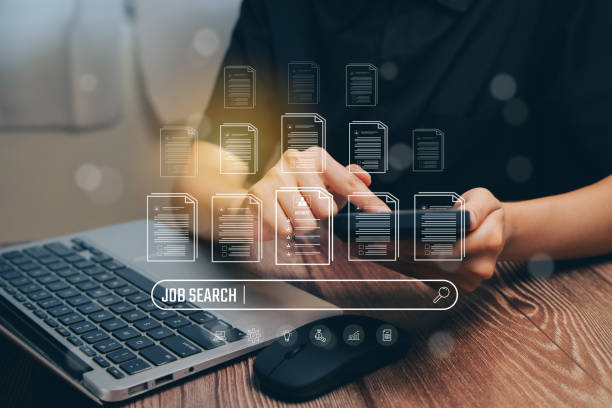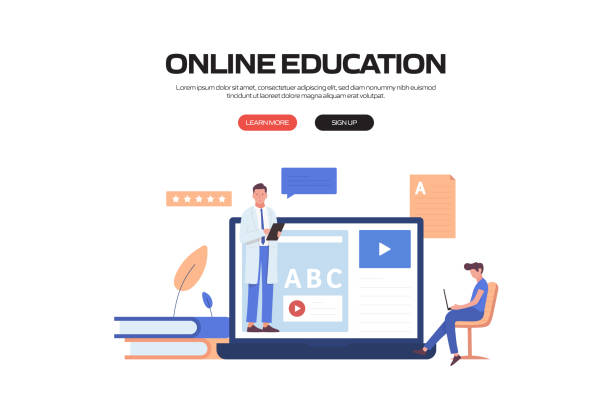Introduction to On-Page SEO: Fundamentals and Importance

#On_Page_SEO or #On-Page_SEO, is the process of optimizing your website pages for higher ranking in search engine results and attracting more organic traffic.
Unlike off-page SEO, which deals with link building and off-site activities, this type of optimization is entirely focused on elements you have full control over.
The main goal of on-page SEO is to help search engines better understand your page’s content and its relevance to user searches.
This includes optimizing title tags, meta descriptions, headings, keywords, content quality, and URL structure.
Without a strong on-page SEO strategy, even the best content may never reach your target audience.
This explanatory and educational approach helps you lay the necessary groundwork for visibility in the digital world.
Effective on-page SEO not only helps search engines index your content better but also improves user experience.
Users prefer to see pages that are well-organized, load quickly, and answer their informational needs.
Therefore, optimizing content and its technical elements is a fundamental step for any website seeking sustainable success in search results.
This is an ongoing process and requires continuous updates and adaptation as Google’s algorithms change.
Understanding these principles is the first step towards achieving your digital marketing goals.
Tired of losing customers due to poor e-commerce website design? With Rasawob, solve this problem forever!
✅ Increase sales and visitor-to-customer conversion rate
✅ Smooth and attractive user experience for your customers⚡ Get free consultation
Why is On-Page SEO the Backbone of Online Success?
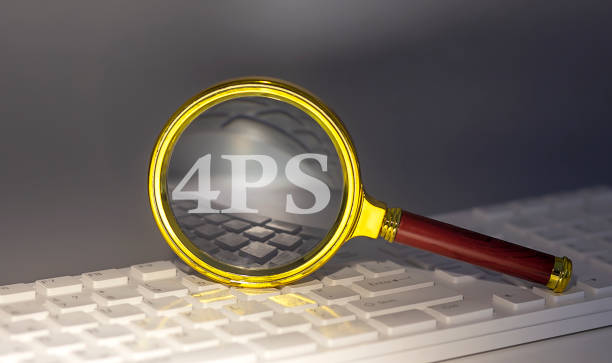
#The_Importance_of_On_Page_SEO has become more evident than ever in today’s competitive internet world.
Imagine you have a website with incredible content and fantastic products, but no one knows about its existence.
This is where the role of on-page SEO becomes prominent.
Without proper optimization, search engines cannot correctly recognize the value of your content, and as a result, your website will not rank high in search results.
On-page SEO gives clear signals to search engines about what your content is about and whether it can meet user needs.
These signals include proper use of keywords in titles and meta descriptions, friendly URL structure, and quality content.
Furthermore, on-page SEO directly affects user experience (UX).
A website with a proper structure, fast loading speed, and readable and engaging content is not only desirable for search engines but also satisfies users.
This leads to a reduction in Bounce Rate and an increase in time spent on the site, both of which are positive signals for search engines.
Providing entertaining and guiding content makes users spend more time on your site and increases the likelihood of them converting into customers or loyal visitors.
Ultimately, investing in on-page SEO is an investment in visibility, more traffic, and the long-term success of your online business.
Keyword Selection and Content Optimization in On-Page SEO
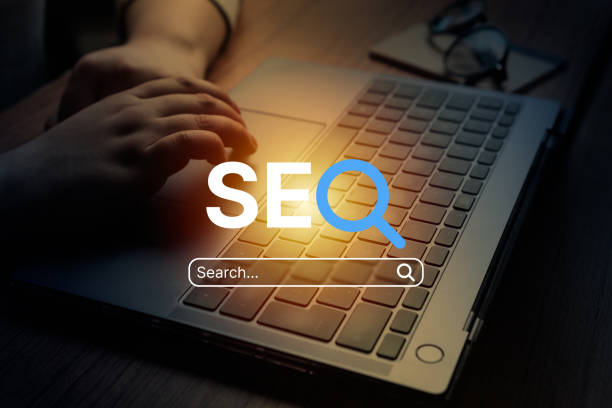
#Keyword_Research is one of the main pillars of any successful #On_Page_SEO strategy.
Choosing the right keywords means finding the phrases your target audience uses to find your products or services in search engines.
This process involves identifying primary and secondary keywords (LSI Keywords) that help Google better understand the main topic of your content.
After finding keywords, it’s time for content optimization.
This means that keywords should be naturally and intelligently incorporated throughout the text, including the page title, meta description, headings, and the main body of the content.
Avoid excessive keyword density (Keyword Stuffing), which can harm your ranking.
Engaging content and valuable, is the foundation of optimization.
Your content should be comprehensive, accurate, and responsive to user needs.
This includes using short sentences and small paragraphs, using lists and bullet points to increase readability, and adding relevant images and videos.
Expert and educational content that answers user questions is not only highly valuable for SEO but also increases your trust and credibility.
The table below highlights the importance of keyword placement in various elements of on-page optimization.
| Page Element | Importance for Keywords | Description |
|---|---|---|
| Title Tag | Very High | Most important signal for search engines and the first thing users see. |
| Meta Description | Medium | Affects click-through rate (CTR), not direct ranking. |
| Headings (H1, H2, H3…) | High | Structuring content and signaling to the search engine about sub-topics. |
| Body Content | High | Natural and logical use of primary and LSI keywords. |
| Page URL | Medium | Readable URLs containing keywords. |
| Image Alt Tag | Medium | Helps understand image content and ranking in image search. |
Technical Components of On-Page SEO Beyond Words
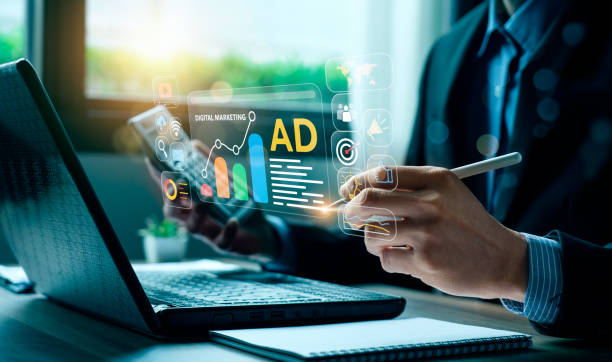
#Technical_aspects in #On_Page_SEO are just as important as content.
A strong technical website structure helps search engines easily crawl and index your pages.
One of the most important components is URL structure.
Short, readable, and keyword-rich URLs are beneficial for both users and search engines.
For example, instead of using long and complex URLs with meaningless numbers and letters, use URLs like www.yourdomain.com/seo-dakheli-rahnama.
This is a key guidance for improving crawlability.
Title Tags and Meta Descriptions, although not directly affecting ranking, play a vital role in click-through rate (CTR).
The title should be attractive, contain the main keyword, and be less than 60 characters.
The meta description should also provide a compelling summary of the page’s content and include keywords to encourage users to click.
Also, proper use of heading tags (H1 to H6) is essential for structuring content.
H1 should include the main keyword of the page, and each page should only have one H1.
H2 and H3 are used for sub-topics and organizing content, which improves readability for users and content understanding for search engines.
These are crucial components for a comprehensive on-page optimization strategy.
Page loading speed is also an important factor affecting user experience and ranking; pages that load faster achieve a better rank.
Worried about losing customers because you don’t have a professional e-commerce website?
With e-commerce website design by Rasawob, forget these worries!
✅ Significant increase in sales and visitor-to-customer conversion rate
✅ Professional and user-friendly design that builds customer trust⚡ Get free consultation on online store design with Rasawob!
On-Page SEO Compatibility with Content Types
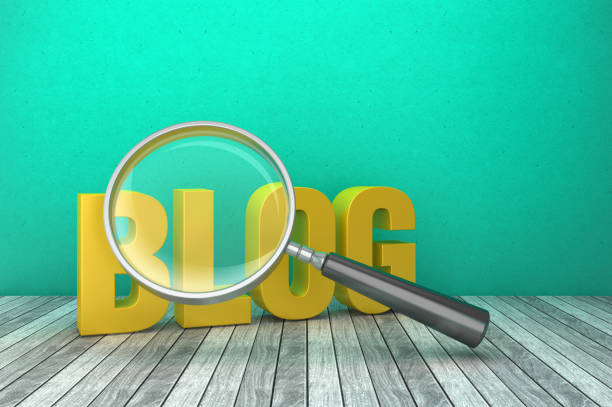
#Content_types on websites are highly diverse, and each type requires a specific approach in #On_Page_SEO.
For example, blog posts often include educational, explanatory, or news content.
For this type of content, focusing on the depth and quality of information, natural use of keywords, and referencing credible sources is important.
The goal is for the content to answer complex user questions and assist them in their learning journey.
This approach is particularly effective for building “content hubs”.
Product pages in online stores require different optimization.
On these pages, keywords should be selected based on product features and benefits.
Product descriptions should be comprehensive, unique, and contain relevant keywords.
Using customer reviews and frequently asked questions (FAQ) can also help improve on-page SEO for these pages and create engaging content that users are looking for.
For service pages, focusing on local keywords and detailed service descriptions, along with clear Calls to Action, is important.
Ultimately, every type of content should be optimized for an optimal user experience.
This includes readability, visual appeal, and ease of access to information.
Adapting the on-page optimization strategy to the content’s purpose and type is a fundamental step for visibility in search results.
This is a comprehensive guide for producing SEO-friendly content.
Optimizing Media for Better On-Page SEO
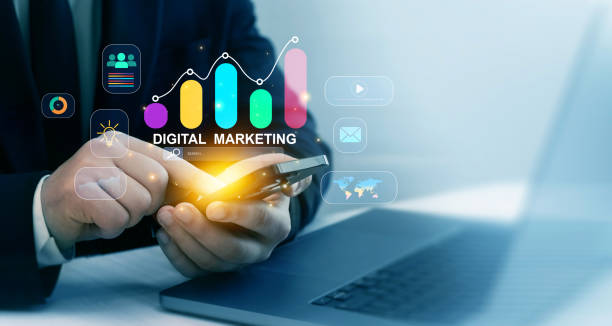
#Image_and_Video_Optimization is one of the important aspects of #On_Page_SEO that is often overlooked.
Images and videos not only make your content more engaging but can also be important sources of organic traffic, especially through Google Image Search and YouTube.
For images, the most important point is using a proper Alt tag.
The Alt tag should be a short, accurate description of the image content and include keywords relevant to the page.
This tag not only helps search engines understand the image but is also useful for users whose images do not load or who use screen readers.
In addition to the Alt tag, image file size and format are also important.
Large image files can slow down page loading speed, which harms user experience and SEO ranking.
Using optimized formats like WebP and compressing images without losing quality are essential steps.
For videos, uploading them to suitable platforms like YouTube (which is owned by Google) and then embedding them on the website is recommended.
Adding a Transcript for videos not only improves accessibility but also helps search engines better understand your audio and visual content and use the keywords within it for ranking.
Using Structured Data (Schema Markup) for videos can also help display them as Rich Snippets in search results.
These analytical and specialized elements are essential for complete on-page SEO optimization.
Internal Linking and Its Role in User Experience and On-Page SEO
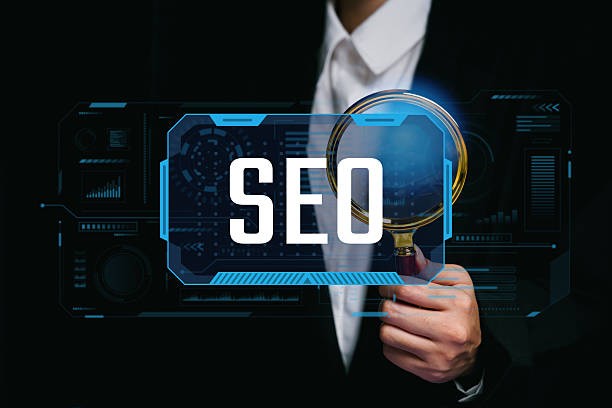
#Internal_Linking is one of the most powerful tools available to website managers for improving #On_Page_SEO and #User_Experience (UX).
Internal links are links that point from one page on your website to another page on the same website.
These links serve several important functions: Firstly, they help search engines understand your site’s structure and crawl and index different pages.
Secondly, they transfer “authority” (Link Equity) from stronger pages to weaker pages, helping them rank higher.
Thirdly, internal links significantly improve user experience.
They help users easily navigate your site and discover more relevant content, leading to increased time spent on site and reduced bounce rate.
When creating internal links, using descriptive and relevant anchor text that includes keywords is very important.
Avoid generic anchor text like “click here” and instead use phrases that clearly describe the content of the destination page.
Creating “content hubs” or “topic clusters” where multiple related pages link to a central page is an effective strategy for strengthening on-page SEO.
This is a key guidance for improving site navigation.
The table below illustrates effective internal linking methods.
| Strategy | Description | On-Page SEO Benefits |
|---|---|---|
| Link from relevant content | Create links from one blog post or page to another related post/page within the same text. | Increase Page Authority, improve user navigation. |
| Link from main pages to sub-pages | Linking from high-authority pages (such as the homepage) to more important and newer pages. | Transferring authority and helping new pages get indexed. |
| Use descriptive anchor text | Use keywords or related phrases in the link’s anchor text. | Help search engines understand the topic of the destination page, improve ranking for target keywords. |
| Create Content Hubs | Create a central (pillar) page that links to several related and more detailed pages and vice versa. | Establish authority in a specific area, improve site structure and hierarchy. |
| Navigation Links | Links in menus, footers, and sidebars that point to the main pages of the site. | Improve user experience and page discoverability for crawlers. |
Performance Tracking and Analysis in On-Page SEO
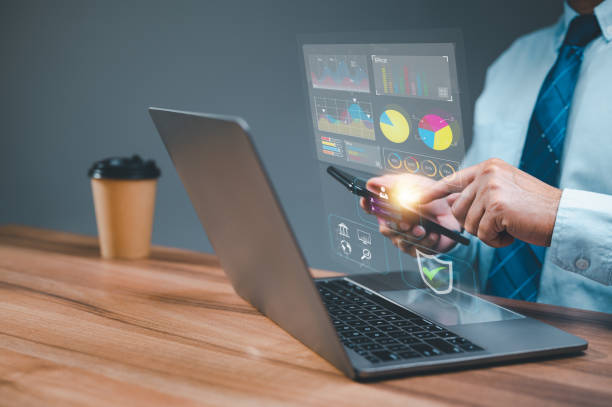
#Performance_tracking and #data_analysis are integral parts of a successful #On_Page_SEO strategy.
Without measurement, you cannot know which parts of your efforts have been effective and which need optimization.
Tools like Google Analytics and Google Search Console are vital resources for gathering information about your website’s performance in search results.
Google Analytics allows you to monitor site traffic, user behavior (such as bounce rate, time on page, and pages visited), and traffic sources.
Google Search Console provides more direct information about how Google interacts with your site, including the keywords users found you with, your pages’ average ranking, crawl issues, and indexing errors.
Using this data, you can gain an in-depth analysis of your on-page SEO‘s strengths and weaknesses.
For example, if you notice that a specific page with high-ranking relevant keywords has a low click-through rate, its title tag and meta description might need optimization.
Or if a page’s bounce rate is high, perhaps the content is not engaging or explanatory enough, or it doesn’t align with the user’s search intent.
This specialized information helps you make informed decisions for continuously improving your on-page optimization and achieving your online business goals.
Is your current e-commerce website design not bringing in the expected sales?
Rasawob specializes in professional e-commerce website design!
✅ An attractive and user-friendly website aimed at increasing sales
✅ High speed and security for an ideal shopping experience⚡ Get free consultation on online store design with Rasawob!
Common Mistakes in On-Page SEO and Solutions
![]()
#Common_mistakes in #On_Page_SEO can render your efforts fruitless and even lead to search engine penalties.
One of the most common mistakes is Keyword Stuffing; that is, unnaturally repeating a keyword excessively in the text.
This practice not only reduces content readability but is also identified by Google’s algorithms as a black-hat SEO technique and can harm your ranking.
The guidance is to use keywords naturally and in the appropriate context.
Another mistake is low-quality or “thin” content.
Pages with short, valueless, or copied content have little value for users and search engines.
To fix this, expand your content, provide accurate and comprehensive information, and ensure each page has unique value.
Duplicate Content is also a major challenge; it occurs when identical or very similar content exists across multiple URLs on your site or on other sites.
Use site audit tools to identify these cases and resolve the issue using Canonical tags or 301 redirects.
Broken Links and poor mobile user experience are also issues that need to be fixed quickly to avoid harming your on-page SEO ranking.
Addressing these technical issues will guarantee sustainable improvements in ranking and increased organic traffic.
The Future of On-Page SEO and the Necessity of Continuous Updates
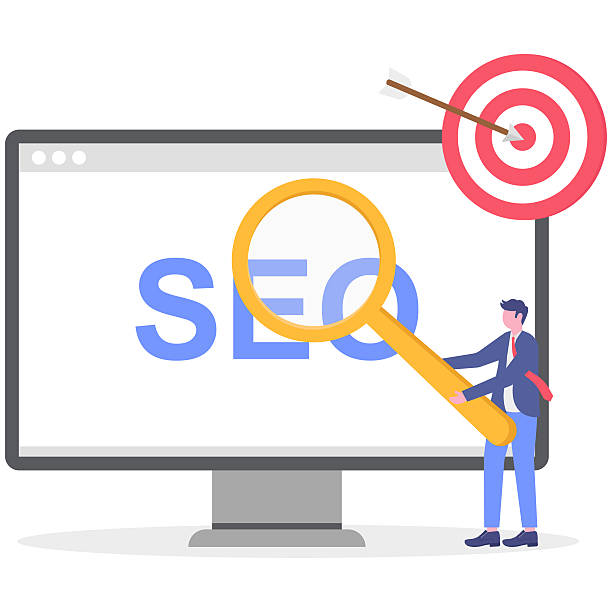
#The_Future_of_SEO and #On_Page_SEO are constantly evolving, and with the emergence of new technologies and changing user behavior, #continuous_updates to strategies are essential.
One of the most important future trends is Voice Search.
With the increased use of voice assistants like Siri and Google Assistant, long-tail keywords and conversational phrases are becoming more important.
Your content should be able to answer questions people ask verbally.
This approach means producing engaging content and answering frequently asked questions.
Artificial Intelligence (AI) plays an increasing role in understanding content and user search intent.
Google’s algorithms like RankBrain and BERT have improved the ability to understand the meaning behind words and semantic relationships.
This means that focusing on content quality and depth, not just keywords, is of paramount importance.
Also, the principles of E-A-T (Expertise, Authoritativeness, Trustworthiness) have become more important than ever in on-page SEO.
Google is looking for sources written by experts and that are trustworthy.
With the emergence of new news and algorithmic changes, a precise analysis of performance and readiness to adapt is key to long-term success.
On-page optimization is no longer a one-time activity but an ongoing process vital for maintaining competitiveness in the online space.
Frequently Asked Questions
| Row | Question | Answer |
|---|---|---|
| 1 | What is On-Page SEO? | On-page SEO refers to a set of actions performed within the website (on its pages) to improve its ranking in search engine results. This includes optimizing content, site structure, and HTML codes. |
| 2 | Why is On-Page SEO important? | On-page SEO helps search engines better understand the page content and determine whether it is relevant and valuable for user searches. This better understanding leads to higher rankings. |
| 3 | What is the first and most important step in On-Page SEO? | Keyword Research is the most important initial step. By finding appropriate keywords, targeted content relevant to user needs can be produced. |
| 4 | What is the role of the Title Tag in On-Page SEO? | The title tag is one of the most important ranking factors and should include the main keyword. This tag is displayed as the page title in search results and influences the click-through rate (CTR). |
| 5 | What is the importance of Meta Description? | The meta description does not directly affect ranking, but by providing an attractive summary of the page content in search results, it can entice users to click, thereby increasing the click-through rate (CTR). |
| 6 | Why is the use of headings (H1, H2, etc.) important in content? | Headings help structure content and improve readability for users and search engine crawlers. Using keywords in headings also helps the search engine better understand the topic. |
| 7 | What does Image Optimization in On-Page SEO include? | It includes compressing images to reduce size, using descriptive and relevant file names, and filling the Alt tag (alternative text) with relevant keywords to help search engines understand the image content. |
| 8 | What is meant by Internal Linking in On-Page SEO? | Internal linking refers to creating links between different pages of a website. This helps distribute page authority (Link Equity), improve user experience, and assist search engine crawlers in discovering new pages. |
| 9 | Why is Page Speed important for On-Page SEO? | Page loading speed is a direct ranking factor and significantly impacts user experience. Slow pages can lead to an increased bounce rate and decreased user engagement. |
| 10 | What role does quality content play in On-Page SEO? | Quality content that is comprehensive, unique, and valuable to the user is the core of on-page SEO. This content not only attracts and retains users but also sends positive signals to search engines, helping to achieve better rankings. |
And other advertising services by RasaWeb Advertising Agency
Smart Advertorial: A new service for increasing customer acquisition through marketing automation.
Smart Sales Automation: A new service for increasing sales through marketing automation.
Smart Social Media: Professional optimization for digital branding using marketing automation.
Smart Advertising Campaign: A new service for increasing website traffic through Google Ads management.
Smart SEO: An innovative platform for improving online growth with intelligent data analysis.
And over hundreds of other services in the field of internet advertising, advertising consultation, and organizational solutions
Internet Advertising | Advertising Strategy | Advertorial
Resources
SEO Articles What is SEO? SEO Training from Zero to Hundred SEO Checklist
? For a powerful presence in the digital world and to elevate your business, Rasawob Afarin, a leading digital marketing agency, is with you. With our comprehensive services, including SEO-optimized website design, we will take your business to the peak.
📍 Tehran, Mirdamad Street, Next to Central Bank, Southern Kazeroun Alley, Ramin Alley, No. 6

